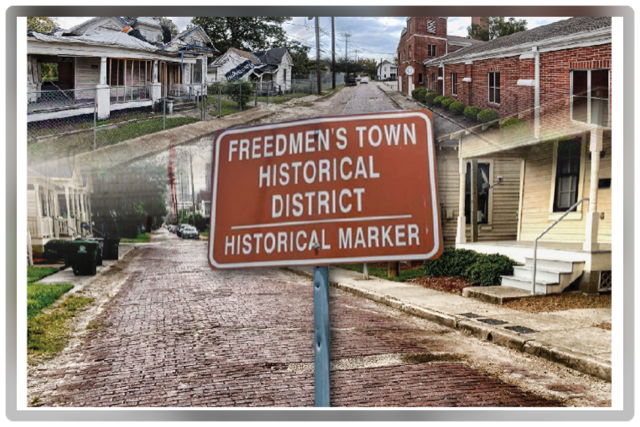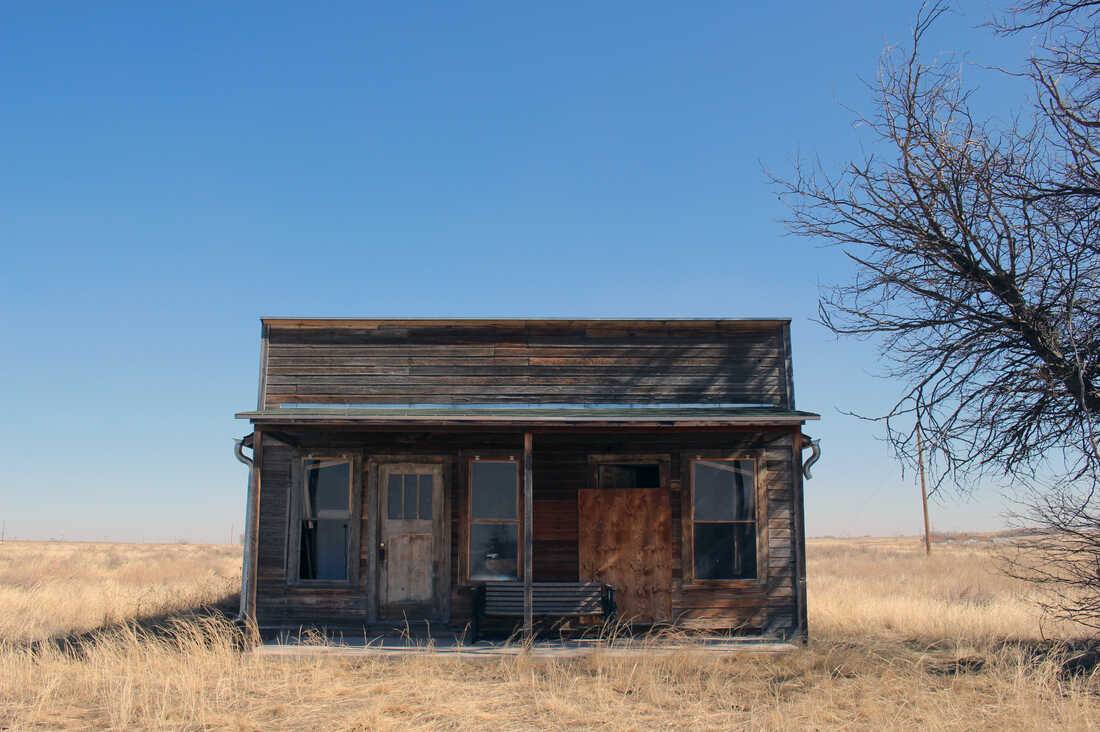Black American lost towns are communities established by African Americans during and after the era of slavery in the United States. These communities were built as safe havens for liberated Black Americans and their families to live independently and freely.
The communities prospered as independent enclaves, cultivating a strong sense of identity and resilience despite the lack of opportunities and ongoing racial discrimination in mainstream society.
Become an insider. Subscribe to our newsletter for more top trending stories like this!
Despite early successes, the “Black American lost towns” encountered many difficulties. These communities faced challenges to their development and viability due to racial policies, violence, and economic exploitation.
Below, we look at Black American lost towns that will always be significant in Black history. Some of them most likely slipped your mind!
People Also Read: The 8 Best Affluent Black Neighborhoods in America
12 Black American Lost Towns You Should Know
Freedmen’s Town, Texas—Houston’s ‘Little Harlem’

After the tragic Civil War, thousands of black slaves who became free bought land and built their homes along the Buffalo Bayou. Given that they were free, the community was named “Freedmen’s Town.”
The town prospered over the course of six decades, and the cobblestone streets were lined with theaters, jazz clubs, upscale shops, and churches.
In the 1920s, Freemen’s Town became “Little Harlem.”.
However, due to the Great Depression, many residents left the community, while a few stayed to watch it deteriorate. In 1984, Freedmen’s Town was marked as a historic district.
Greenwood, Oklahoma– The Black Wall Street
Oklahoma was thriving in terms of employment and other opportunities from its rich oil fields in the early 1900s, attracting African Americans.
Greenwood, part of Tulsa, was nicknamed “Black Wall Street” after producing thriving black businesses.
However, the thriving businesses were stalled after a young white woman accused a black man of rape.
Greenwood faced escalating racial unrest, with a white mob burning down the community, although the black man was not charged. The community was later abandoned.
Freedman’s Village, Virginia– The Nation’s Safe Haven
In 1863, the federal government used the Custis and Lee estate grounds to construct Freedman’s Village. There are about 50 one-and-a-half-story houses on the estate, each of which can house two families.
In 1900, the village was shut down by the government. In its place, you’ll find the southern end of Arlington National Cemetery, the Pentagon, and the Navy Annex building.
New Philadelphia, Illinois— Underground Railroad Safe Haven
Before the Civil War, African American Frank McWhorter registered several towns, including New Philadelphia, founded in 1836. McWhorter was a former Kentucky slave who gathered money from work and his own enterprises to purchase freedom for himself and his family.
Additionally, he acquired 42 acres in southwest Illinois. His town served as an Underground Railroad safe haven prior to the Civil War. By the late 1880s, residents of this town had begun to leave due to the construction of the Hannibal and Naples Railroad.
Today, New Philadelphia is an open field, renamed a national landmark in 2009.
Blackdom, New Mexico—The Black Ghost Town
Frank and Ella Louise Boyer, who moved to New Mexico in 1903, founded Blackdom, a black community southwest of Roswell.
Together with 13 African Americans, they established the Blackdom Townsite Company and named Frank Boyer as its president, with a combined investment of $10,000. It was the state’s first Black community. Blackdom had about 300 residents at that time, and business was booming.
They had established a post office, a blacksmith, shops, a newspaper, and a hotel. The locals established the Blackdom Baptist Church, which also served as the school. But farmers left the town in the 1920s as a result of crop failures and other disasters.
The New Mexico Historic Preservation Division put up the official Blackdom Townsite historical marker to recognize Blackdom’s existence. They did this to honor the nearly 15,000 acres of land that a self-sufficient community with a general store and a Baptist church had developed.
Rosewood, Florida— A Town Destroyed to Ashes
The older African American community will be able to tell the story of Rosewood, a town considered one of the worst race riots in U.S. history.
It was established in 1870, and by 1915, it was a small, predominantly black town with a population of about 300.
On New Year’s Day in 1923, a young white woman accused a black man of sexual assault. In search of the alleged suspect, white men destroyed Rosewood; however, the number of people killed is elusive.
Five Points District, New York—Manhattan’s First Black Home
The Wall Street, you know, today was Lower Manhattan. This neighborhood was the first free black settlement in Manhattan from the 1830s to the 1860s.
You’ll find the town at the five-way intersection of Anthony, Cross, Orange, and Little Water streets, as they were back then.
Become an insider. Subscribe to our newsletter for more top trending stories like this!
With its bars, dance halls, casinos, and prostitution, it also earned a reputation as a notorious slum. During the 1863 draft riots, many black people left the area.
People Also Read: Unveiling Sierra Leone: A Close Look into its Rich Heritage
Weeksville, New York— A Community for Free Blacks
Bedford-Stuyvesant in Brooklyn, New York, Weeksville was the second-largest community for free blacks before the Civil War.
Henry C. Thompson, another freed slave, sold a sizeable amount of land to freed slave James Weeks. Mr. Weeks sold some houses to free blacks, who eventually named the community after him.
Over time, it flourished, becoming a haven for black people fleeing slavery in the South and those fleeing racial unrest and draft riots in other cities in the North.
Allensworth, California— A California Dream
With the goal of creating the first all-black township in the state, Lt. Col. Allen Allensworth and four others founded the California Colony and Home Promoting Association in 1908.
On the Santa Fe rail line, the town had a hotel, a courthouse, and the first black school district by 1914.
The town struggled to survive in the face of setbacks, such as problems with the water supply and the railroad terminating service there. Now known as Colonel Allensworth State Historic Park, the township is preserved.
Davis Bend, Mississippi—A Progressive Slave Town
Joseph Davis once owned the plantation– Davis Bend, where he organized 350 slaves into a more autonomous community. One of those slaves, Benjamin Montgomery, worked as an overseer.
Following the war, Davis gave Montgomery the land his plantation stood on in exchange for $300,000 in gold, with Montgomery continuing to run the free cooperative community until the 1880s.
However, the neighborhood suffered from a weak economy and racial prejudice. Isaiah Montgomery, the son of Montgomery, founded Mound Bayou, a modern-day town.
Nicodemus, Kansas–A Home for African American Farmers
In 1877, newly freed slaves founded Nicodemus, Kansas. African American farmers migrated to the area as the first Black community west of the Mississippi River in an effort to start a new life.
As the town progressed, Nicodemus had a baseball team, a post office, an ice cream parlor, and two newspapers. The Nicodemus community helped elect people of color to county positions and State offices.
While this western frontier was in trouble in 1888, Nicodemus was designated a National Historic Landmark in 1976. The town, which has 23 residents currently, offers tours that include stops at the public Township Hall, the First Baptist Church, and the St. Francis Hotel. In 2021, the city’s historic A.M.E. Church—built in 1885— welcome visitors after renovations.
Dearfield, Colorado– An Agricultural Community
The town of Dearfield, Colorado, was established in 1910 by businessman and entrepreneur Oliver Toussaint Jackson, who was inspired by Booker T. Washington’s autobiography “Up from Slavery.” He wanted Black Americans to live independently in an agricultural community on this new Western front.
Dearfield, which had only two families when it was first settled, had 40 farms and a 140-acre townsite by 1915. Dearfield had its own filling station, dance hall, two churches, school, and lunchroom, and its main street was named after Washington.
Moreover, the town was worth more than $1 million at its peak. Old Deerfield Village was designated a Registered National Historical Landmark and given a plaque in 1962.
Considering the forgotten history of Black American lost towns, we are reminded of the indomitable spirit of a people who survived despite tremendous obstacles.
By recognizing and commemorating these forgotten chapters of history, we gain a deeper understanding of the struggles and triumphs of Black Americans.
People Also Read: Discovering Gambia: A Fascinating Exploration of Its Cultural Tapestry
The Amber Ruffin Show gives an in-depth reality check about some of these towns in this video below;
Nearly 80% of consumers visit directories with reviews to find a local business. List your business for free in our exclusive Spotcovery Black-Owned Business Directory.
Spotcovery offers unique and fresh daily content on Black culture, lifestyle, and experiences. We talk about everything black, black people, black-owned and black-owned businesses. We also deliver authentic and relevant content that will inform, inspire and empower you! The future of black media is critical to today’s black experience! Our primary audience includes African American, African, Afro-Caribbean, and people of African heritage. Black culture is for the culture!
What’s your Reaction?
Become an insider. Subscribe to our newsletter for more top trending stories like this!





